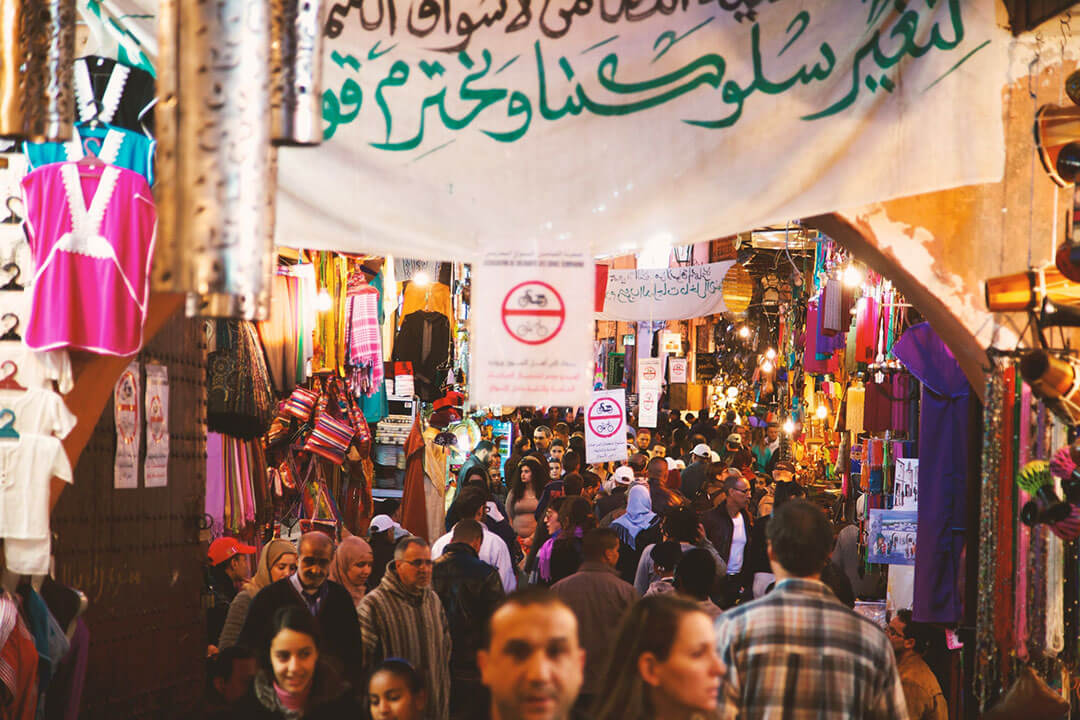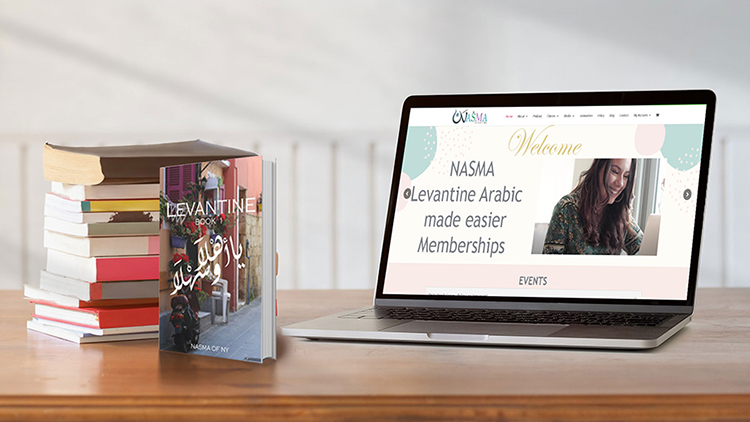by nynasma | May 16, 2024 | BLOG
Thank you for being here 🤍
Discussing social and controversial topics while learning a language fosters critical thinking skills by encouraging learners to consider diverse perspectives and engage in meaningful dialogue. It enhances language fluency as learners navigate complex discussions, expanding their vocabulary and honing their communication abilities. Hence, this is why I chose to talk about this topic today! I recommend to watch my Instagram video first, then watch it again while reading the subtitles, and then you can choose what vocabulary you would like to add to your flashcards.
Notes of Video “Cheating Husband”.
Phonetic Script:
Shefit zog rfe2te e3id b Starbucks ma3 we7de tenyeh b jalseh 7amimiyeh, b2ol la marto shi?
Shakhes minkon ba3atle hal osha w sa2alna kif fina ne7ke 3an hayda el-mawdo3 bil 3arabe. Ka ahel el-balad, ni7na hek minla2le2.
Awal shi, shu m2a3dek b Starbucks? Ma ni7na m2at3in!
Tene shi, ente m2aqadeh inu hayda huwe? Mish balke 7adan byeshbahu? Hal2 iza m2aqadeh miyeh bil miyeh, fike tsawre w teb3ate el-sorah la marto w tis2aliha iza hayda jawza. Hayda eza badek tekherbeh bayta!
Iza ana ma7alek, bro7 la 3indo bsalem 3ale w bis2alo, ‘wein marto w kifa w waina?’ Yimkin el-mara yale ma3o ma bta3ref inu huwe mjawaz.
Arabic script:
شفت زوج رفيقتي قاعد بستاربكس مع وحدة تانية بجلسة حميمية، بقول لمرته شي؟
شخص منكن بعتلي هالقصة وسألنا كيف فينا حكي عن هالموضوع بالعربي. كأهل البلد نحن هيك منلَقلِق
أول شي شو مقعدك بستاربكس ما نحن مقاطعين
تاني شي إنت مأكدة إنو هيدا هوي مش بركي حدا بيشبهه؟ هلأ إذا مأكّدة مية بالمية فيكي تصوريه وتبعتي الصورة لمرته وتسأليها إذا هيدا جوزها، هيدا إذا بدك تخربي بيتها
إذا انا محلك بروح لعنده بسلم عليه وبسأله وين مرته، كيفها ووينها، يمكن المرأة يلي معه ما بتعرف انه هوي مجوز
English Translation:
I saw my friend’s husband sitting in Starbucks with another woman in an intimate setting. Do I tell his wife?
One of you sent me the story and asked us how can we talk about this in Arabic? As natives, this is how I would spill the tea.
First of all, why are you sitting in Starbucks? We are boycotting that!
Second of all. Are you sure it’s him not someone who looks like him? If you are 100% sure you can take a picture and send it to his wife and ask her if that’s her husband. This is if you want to wreck her home.
If I were you, I would go to him, say hi and ask him where his wife is, how is she, and where is she? Maybe the woman that is with him does not know that he is married.
Notes:
| Word |
Masculine |
Feminine |
Notes (if any) |
| Intimate setting |
Jalseh 7amimiyeh |
|
This phrase can also be used to refer to an intimate gathering with your friends. Not romantically only. |
| Spill the tea |
Minla2le2 |
|
It’s a verb. The root is ‘La2la2 / لقلق” and the imperfect form is ‘Yla2le2 / يلقلق’
The noun would be ‘La2la2ah / لقلقة’ |
| Boycotting |
M2ate3 |
M2at3ah |
And the plural is m2at3in. |
| 100 percent |
Miyeh bil miyeh |
|
Very useful phrase and has no gender. |
| Wreck her/his home |
Tekherbeh bayto |
Tekherbeh bayta |
Very common phrase that is used. The phrase is made of two words, to ruin or wreck and house. The root verb for to ruin is ‘Kharab / خرب’ and the imperfect is ‘Ykhrob / يخرب’ |
Checkout or textbooks HERE
Join our group classes HERE
Schedule a private class with ME
Join our free Levantine Masterclass HERE
We offer kids classes & kids stories Too!

by nynasma | Nov 17, 2020 | BLOG
One Language, Dozens of Dialects
Since you’re reading this, you are curious about the Arabic language. But saying “Arabic language” oversimplifies the matter considerably. There are many varieties of Arabic, some of which are wildly different from others. If you want to read Arabic-language newspapers and websites, then you’ll need to know Modern Standard Arabic (MSA), but that won’t help you much in a conversation. If you want to talk to people, you’d best learn the Levantine dialect or one of the other popular dialects of Arabic. Arabic is not a single language but an umbrella that covers a vast continuum of dialects, each showing a unique history that developed over many centuries. In this blog post, you’ll read a brief overview of Arabic dialects.

Can Arabic Speakers Understand Each Other?
If you’ve read this far, you presumably have a good grasp of the English language. You won’t lack for the company: as many as two billion people speak English (400 million do so natively). Nor will you lack for reading material, as English is the most frequently used language in scientific papers and on the Internet. Arabic’s numbers are more modest in this regard: there are perhaps 400 million speakers, native and second language, of all varieties of Arabic. Most live in the Middle East and the north of Africa, but there is also a significant Arabic diaspora.
What happens if you put an English speaker from Ireland and an English speaker from New Zealand in a room together? Would they be able to converse at once? Or would it take a long time for them to understand one another? As it turns out, they’d figure it out quickly. With a bit of time and patience, those two would soon come to grips with their differences in slang, accent, and minor points of syntax, and could chat happily.
The linguistic term to describe two dialects or languages that are similar enough that a speaker of one can understand the other is mutually intelligible. Despite the huge number of speakers, all varieties of English are mutually intelligible. No two are so distinct that a pair of speakers from far-flung cultures would be unable to work through their differences and communicate efficiently.
With Arabic, the situation is more complicated. Distant varieties of Arabic can be mutually unintelligible, and some linguists consider such wildly different varieties to be entirely separate languages. For example, an Arabic speaker from Saudi Arabia would have great difficulty understanding an Arabic speaker from Morocco.
One solution to the problem of unintelligibility comes in the form of Modern Standard Arabic (MSA). MSA developed alongside the use of the printing press in the Arabic world, and it is a standardized form of Arabic. MSA is the language used by newscasters, academics, schoolteachers, lawyers, and legislators. Most Arabic speakers use MSA only for reading and writing and prefer their mother dialect for speech. Nobody speaks MSA as a first language, but since all Arabic speakers know MSA, it provides a common ground for speakers whose dialects of Arabic are mutually unintelligible.
Incidentally, mutual intelligibility is not a yes or no proposition. Some dialects are highly mutually intelligible, others only somewhat so. Roughly speaking, the farther apart the geographic homes of two dialects are, the less intelligible they will be.

The Many Arabic Dialects
As mentioned above, Arabic varies considerably from region to region. There are approximately 30 total varieties. Some are quite like one another, and some are mutually unintelligible. A blog post is insufficient to discuss all these varieties and the differences between them, so what follows is a necessarily incomplete list of some of the most-spoken varieties.
This is the family of Arabic dialects spoken in Morocco, Algeria, Tunisia, and Libya. About 70 million people speak the language. Maghrebi Arabic shows a lot of influence from the Berber language and has liberally borrowed loanwords from French, Spanish, and Italian. Thanks to this unique combination of influences, Maghrebi Arabic tends to be incomprehensible to Arabic speakers from the Middle East, with Moroccan Arabic being particularly opaque.
Egyptian Arabic is the native language of more than 60 million people, and thanks to the popularity of Egyptian media and the broad influence Egypt wields, most of the Arabic-speaking world understands Egyptian Arabic. Keep in mind, however, that the people of Egypt speak a variety of dialects; when people say “Egyptian Arabic,” they usually mean the Arabic commonly spoke in Cairo.
Like so many other varieties of Arabic, the Levantine dialect is not a single form of Arabic, but a continuum of dialects. There are several mutually intelligible dialects: Palestinian, Jordanian, Lebanese, and Syrian Arabic are the primary varieties of Levantine Arabic, totaling over 30 million native speakers.
Part of the popularity of Levantine Arabic comes from the creativity of its people. As in Egypt, the people of the Levant produce a huge variety of music and shows, and thanks to the mutual intelligibility of the dialects, Arabic-speaking citizens of one country can easily enjoy the media of the others. Additionally, producers of foreign media often expand their viewership into the Levant by producing Levantine translations of their works. Turkish soap operas are so popular in the Levant that several shows are regularly dubbed into Levantine Arabic.
There is also a significant diaspora of Levantine Arabic speakers. It’s obvious why: the conflict between Israel and Palestine, the civil war in Syria, protests and upheavals in Lebanon and Jordan … the Levant has suffered through political and economic instability for years. Many people have taken the difficult decision to leave their homelands to try to find safer places to live, and those people brought their language with them.
There are many more varieties of Arabic than the few discussed here, and we hope to discuss more in future posts. If you are curious about learning Levantine Arabic, please browse through the rest of our website. Check out our podcast or follow us on Instagram and you can start to learn Arabic for free, one word at a time.

by nynasma | Oct 14, 2020 | BLOG
The Arabic Language: A Brief Overview
If you’re reading this, you’re interested in learning Arabic online. Whether want to learn the Arabic alphabet or just brush up on your conversational skills already, it doesn’t hurt to know a little about where Arabic comes from and how it’s spoken today.
Arabic is the fifth-most-spoken language in the world, but that simple statement belies considerable complexity. Arabic has been spoken since the first century. However, time and the movement of people have split the language into dozens of dialects. Many of these dialects are quite different: an Arabic speaker from Morocco will struggle to make himself understood by an Arabic speaker from Sudan. With the introduction of the Arabic printing press in the 1800s, publishers started attempting to standardize Arabic. This was the beginning of Modern Standard Arabic (MSA).
MSA is a standardized dialect taught across the Arab world. It is an official language of more than twenty countries and an official language of the United Nations. Few people, if any, speak MSA as their mother tongue, but MSA is taught in schools and is the primary Arabic dialect used in books and other media. The Moroccan and Sudanese Arabic speakers will likely be able to communicate in MSA. Still, MSA is not often used in conversation, and most Arabic speakers use MSA only passively, such as when reading websites and watching the news.
Arabic is the official tongue of many nations, but its 400 million speakers live all around the globe. Many people living far from the Middle East take the obvious course of action and learn Arabic online.

How Many Kinds of Arabic Are There?
The answer depends on whom you ask: estimates can reach up into the dozens. Linguists lump dialects of Arabic into several groups: Egyptian, Maghrebi, Sudanese, Mesopotamian, Peninsular, and Levantine Arabic (our speciality). Some of these groups are further split into dialects, which too numerous to list in a short blog post; the total number of dialects is around three dozen. (You can see why the standardized MSA is a helpful invention!) Some of the varieties of Arabic are spoken by tens of millions, others have only a few thousand speakers.
Classical Arabic
In addition to the many varieties of Arabic spoken today, one might come across Classical Arabic. This is the Arabic that arose in the seventh century and persisted through the middle ages. Many speakers of Arabic make no distinction between Classical Arabic and MSA, considering them to be two registers of the same language. Classical Arabic is also the liturgical language of Islam.
Why Arabic?
For many, learning Arabic online is a personal method of getting in touch with one’s roots. Children and grandchildren of immigrants may not be able to speak well with their families in their homelands, and they do not always feel connected with their culture. A family in Oslo or Kyoto or Moose Jaw might struggle to find an Arabic tutor, much less a masterclass or after-school program. Being able to learn online gives those people a sense of identity and family they might not otherwise have. This was the case for our founder, Carol Haidar, who moved to New York in 2013. Teaching the language, from those just starting to learn up to conversational mastery, is her method of staying in contact with Arabic culture.
Aside from personal reasons, there are a wide variety of personal and professional reasons to learn Arabic. Those inclined to travel, of course, benefit from knowing the languages of the places they visit. Entrepreneurs who know the language can more easily make connections in burgeoning Middle East markets. And the history and culture of the Middle East fascinate scholars and laypeople alike. And nothing quite stimulates the intellect of a child as learning another language.
To someone who knows only the Latin alphabet, the Arabic alphabet looks hopelessly complicated. A few basic facts provide a good start to greater understanding:
- Arabic is written and read from right to left. Numbers read left to right.
- There are twenty-eight letters in the Arabic alphabet. All are consonants.
- Vowels are often omitted entirely. Three consonants can also represent vowels, and diacritic marks also indicate certain vowels.
- There are no uppercase or lowercase letters, but the shape of letters can change depending on whether the letter is a first, last, or middle letter of a word, or if it stands alone.
Arabic is a phonemic language. That is, the letters correspond closely with the sounds they represent. Spare a moment of thought for those unfortunate people who are learning English, puzzling over cough, though, bough, and through. Arabic is much simpler once you know what sounds match with what letters.
Most adult study materials for Arabic, including our own, include both Arabic text and Latin phonetics. This makes it easy to learn to read, write, and speak all at the same time.
Options for Learning Arabic Online

Interested in our online classes? We offer several different options to help you learn.
1. Private Lessons: one of our dedicated private instructors will assist you in learning Modern Standard Arabic or the Levantine dialect.
2. Kids’ Program: Starting at age three, we offer six-week programs designed to give young children an early start on speaking Levantine Arabic.
3. Levantine Masterclass: For people fourteen and older, our online masterclass features a curriculum and course materials written by Nasma’s founder, Carol Haidar. Courses are suitable for beginners, so you’ll learn the Arabic alphabet and work your way up from there. Learn at your own pace with weekly instructional videos, homework, and Zoom meetings.
Right now, we are offering a fourteen-day free trial of our masterclass, so you can start to learn Levantine Arabic for free. See if it’s right for you, and don’t hesitate to get in touch if you have a question.






